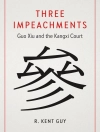In
One Without the Other, Shelley Moore explore the changing landscape of inclusive education. Presented through real stories from her own classroom experience, this passionate and creative educator tackles such things as inclusion as a philosophy and practice, the difference between integration and inclusion, and how inclusion can work with a variety of students and abilities.
Tabella dei contenuti
Foreword v
Introduction 1
Part 1: What Is Inclusion? Debunking the Myths 7
1 Inclusion Is Not Just About Students with Special Needs 9
2 Inclusion Is Not Integration 12
3 Inclusion Is Not a Place and Time 18
4 Inclusion Is Not a Destination 24
Part 2: What Is Inclusion? Telling the Stories 31
5 Inclusion Is Presuming Competence: Under the Table 33
6 Inclusion Is Putting People First: A Gay Danish?! 35
7 Inclusion Is Diversity: A Composition 42
8 Inclusion Is Critical: The Split 48
9 Inclusion Is Learning from Each Other: The “Other” Kids 53
10 Inclusion Is Collaborative: The Bears 59
11 Inclusion Is Multiple and Diverse Perspectives: My Bully 66
12 Inclusion Is Leaving No One Behind: The Sweeper Van 79
Acknowledgments 86
References 88
Circa l’autore
Leyton Schnellert, Ph D, (he/his/him) is an associate professor in UBC’s Department of Curriculum & Pedagogy and Eleanor Rix Professor in Rural Teacher Education. He focuses on how teachers and teaching and learners and learning can mindfully embrace student diversity and inclusive education. Dr. Schnellert is the Pedagogy and Participation research cluster lead in UBC’s Institute for Community Engaged Research, inclusive education research lead in the Canadian Institute for Inclusion and Citizenship, and co-chair of BC’s Rural Education Advisory. His community-based collaborative work contributes a counter argument to top-down approaches that operate from deficit models, instead drawing from communities’ funds of knowledge to build participatory, place-conscious, and culturally responsive practices. Leyton works and learns on the traditional, ancestral, and unceded territory of the Sinixt who were declared extinct by Canada’s government in 1956 and stands in solidarity with the Sinixt in their reclamation efforts.Leyton has been a middle and secondary years classroom teacher and a learning resource teacher for grades K–12. His books, films, and research articles are widely referenced locally, nationally, and globally.












